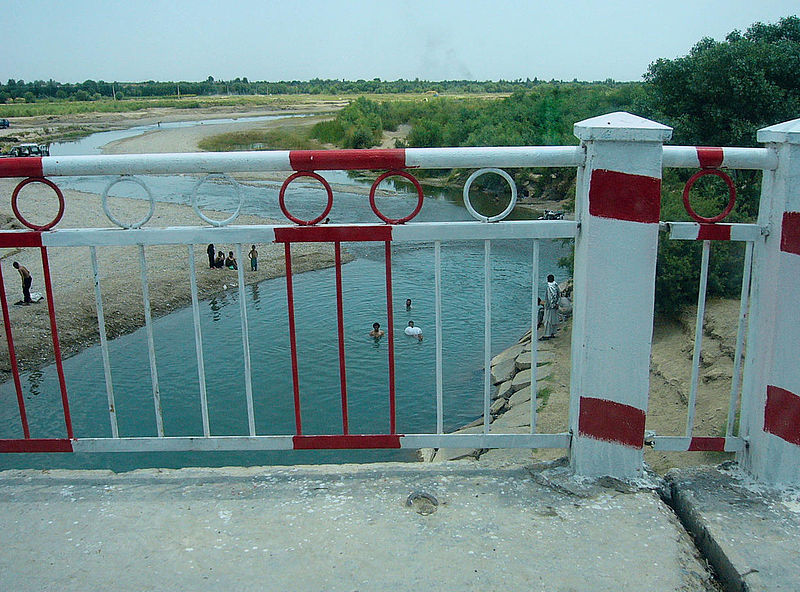The Hari River or Harirud is a river flowing 1100 kilometers from the mountains of central Afghanistan to Turkmenistan, where it disappears in the Kara-Kum desert. Rud means “river” in Persian.
In Turkmenistan it is known as the Tejen or Tedzhen river and passes close to the city of Tedzhen. In Latin, it was known as the Tarius.
Course
The river originates in the Baba mountain range, part of the Hindu Kush system, and follows a relatively straight course to the west.
In western Afghanistan the Hari River flows to the south of Herat. The valley around Herat was historically famous for its fertility and dense cultivation. The river meets the Jam River at the site of the Minaret of Jam, the second tallest ancient minaret in the world at 65 meters.
After Herat, the river turns northwest, then north, forming the northern part of the border between Afghanistan and Iran. Farther north it forms the south-eastern part of the border between Iran and Turkmenistan. The Iran–Turkmenistan Friendship Dam is on the river.
In 2000, the river dried up completely during a 10-month drought.
Ancient References
The Rigveda records the Harirud as River Sarayu. The river Horayu is also mentioned in the Avesta. A Buddhist monastery hand-carved in the bluff of the river Harirud existed in the first centuries during the prevalence of Buddhism. The artificial caves revealed testimony of daily life of the Buddhist monks.


